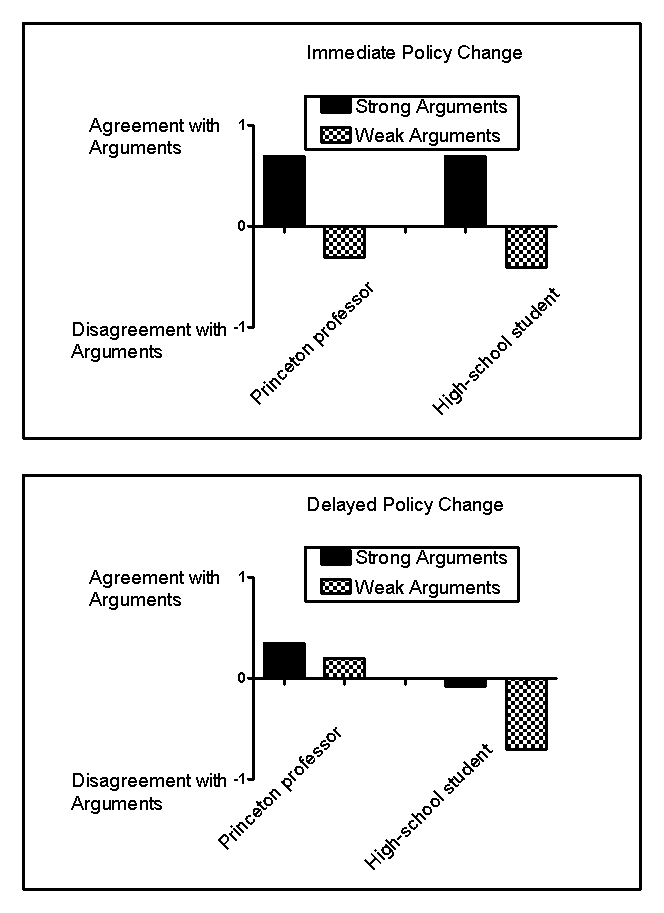Use the following to answer questions
Scenario II
The following scenario contains fabricated results consistent with the following study:
Petty,R.E. ,Cacioppo,J.T. ,& Goldman,R.(1981) .Personal involvement as a determinant of argument-based persuasion.Journal of Personality and Social Psychology,41,847-855.
Every day,consumers are exposed to scientifically based sales,marketing,and public relations strategies designed to influence purchasing decisions,change opinions,or win votes.One common sales strategy is the foot-in-the-door technique,a method that involves first making a smaller request that consumers are likely to grant and then following it with a larger request.Another common strategy is the door-in-the-face technique,which involves making an unreasonably large request that consumers will reject and then following it with a smaller request.When persuasion is necessary,it usually takes one of two forms: heuristic persuasion,which involves an appeal to habits or emotion,and systematic persuasion,which involves an appeal to facts and reason.Often,people will rely more on heuristics-simple shortcuts or "rules of thumb"-to make decisions instead of systematically weighing the evidence.
Petty and colleagues (1981) investigated some of these techniques in college students listening to arguments in favor of their college requiring an institution-level comprehensive final examination for graduation.Some students were led to believe that,if adopted,this policy would take place right away,and some were led to believe that the change would take place in a decade.In addition,some of the students were led to believe that they were listening to an argument from a Princeton professor,and others were led to believe that they were listening to an argument from a high-school student.Finally,some students heard strong arguments in favor of the policy,and some heard weak arguments.Thus,the experiment arranged six groups of students.For example,one group of students heard strong arguments from a high-school student about a far-removed policy change.Figure 13.1 shows fabricated results illustrating the major findings of this experiment.
Figure 13.1 
-(Scenario II) Which example describes systematic persuasion?
Definitions:
Primary Visual Cortex
The region of the brain located in the occipital lobe, responsible for processing visual information from the eyes.
Motion
The action or process of moving or being moved, a fundamental concept in physics that applies to objects changing position over time.
Cones
Photoreceptor cells in the retina of the eye responsible for color vision and functional in well-lit conditions.
Rods
Photoreceptor cells in the retina of the eye that are sensitive to low light levels and are primarily responsible for night vision.
Q5: Blaming a tennis loss on a bad
Q24: The trait that we value the most
Q34: A placebo can be mostly effective,even if
Q38: Worried and calm are endpoints on the
Q46: Which factor is NOT a cost of
Q52: Chris Rock's joke that "rich 50 is
Q54: Which strategy has been shown to be
Q67: People exposed to chronic stress experience _
Q128: The process by which a person identifies
Q217: Which computational procedure sorts traits into a